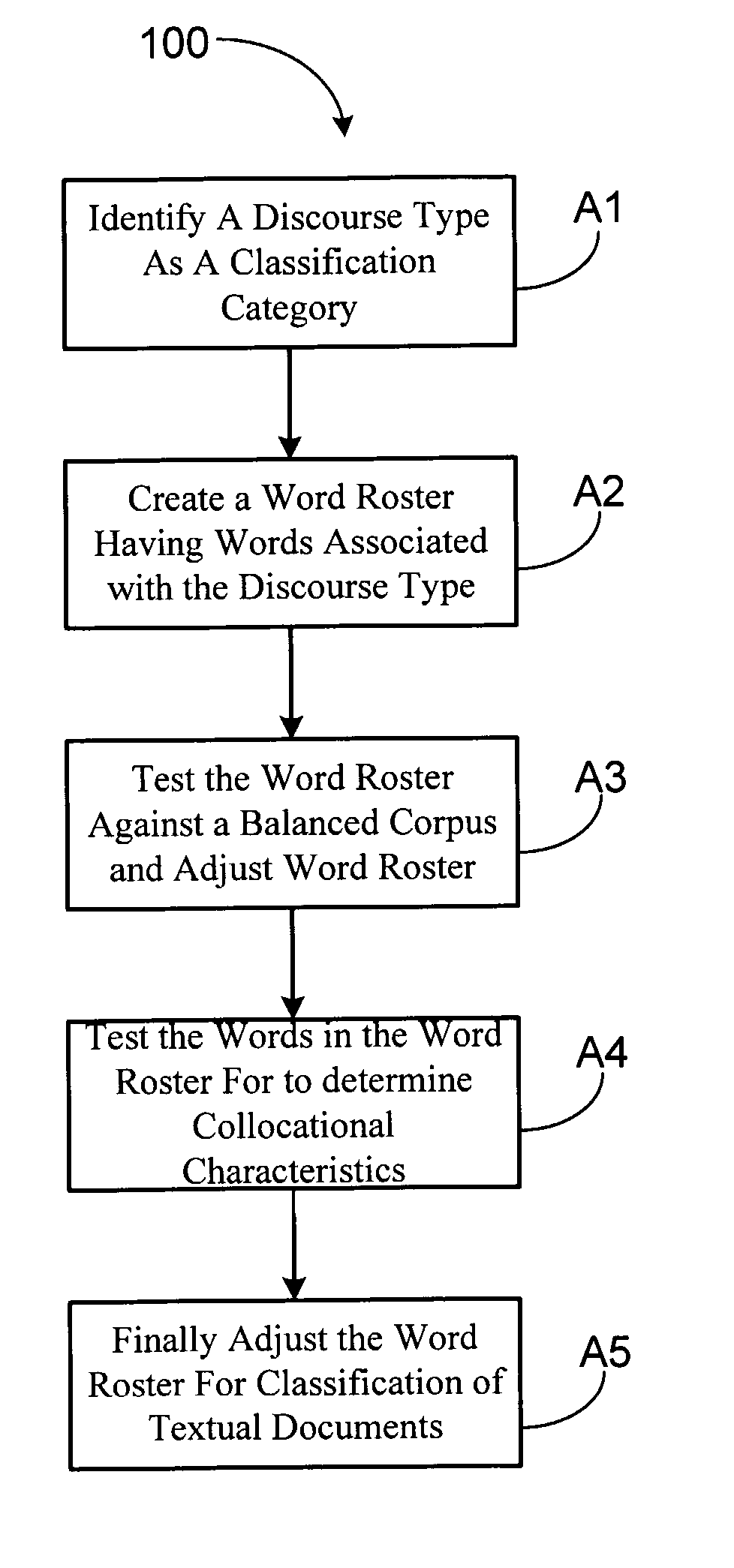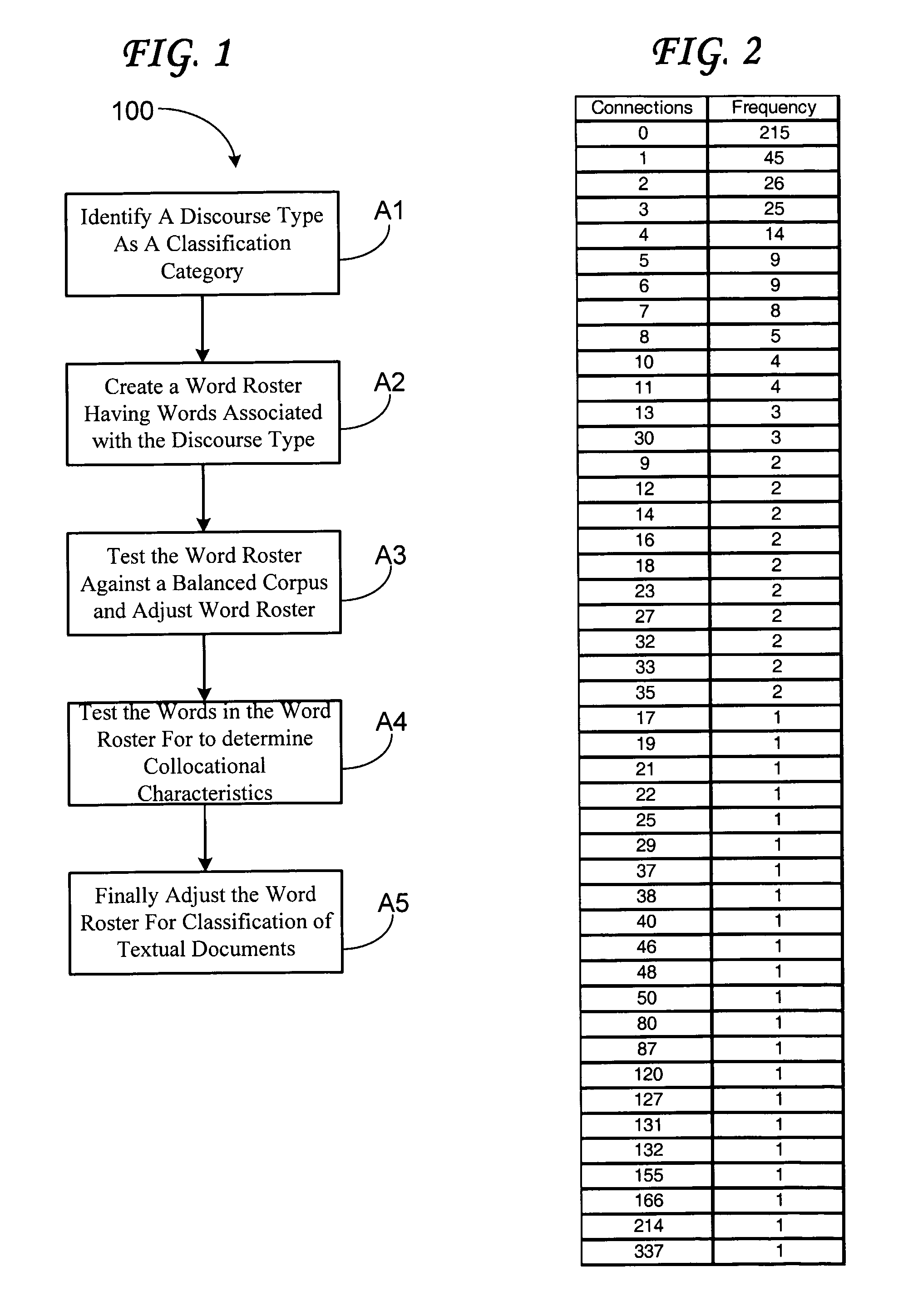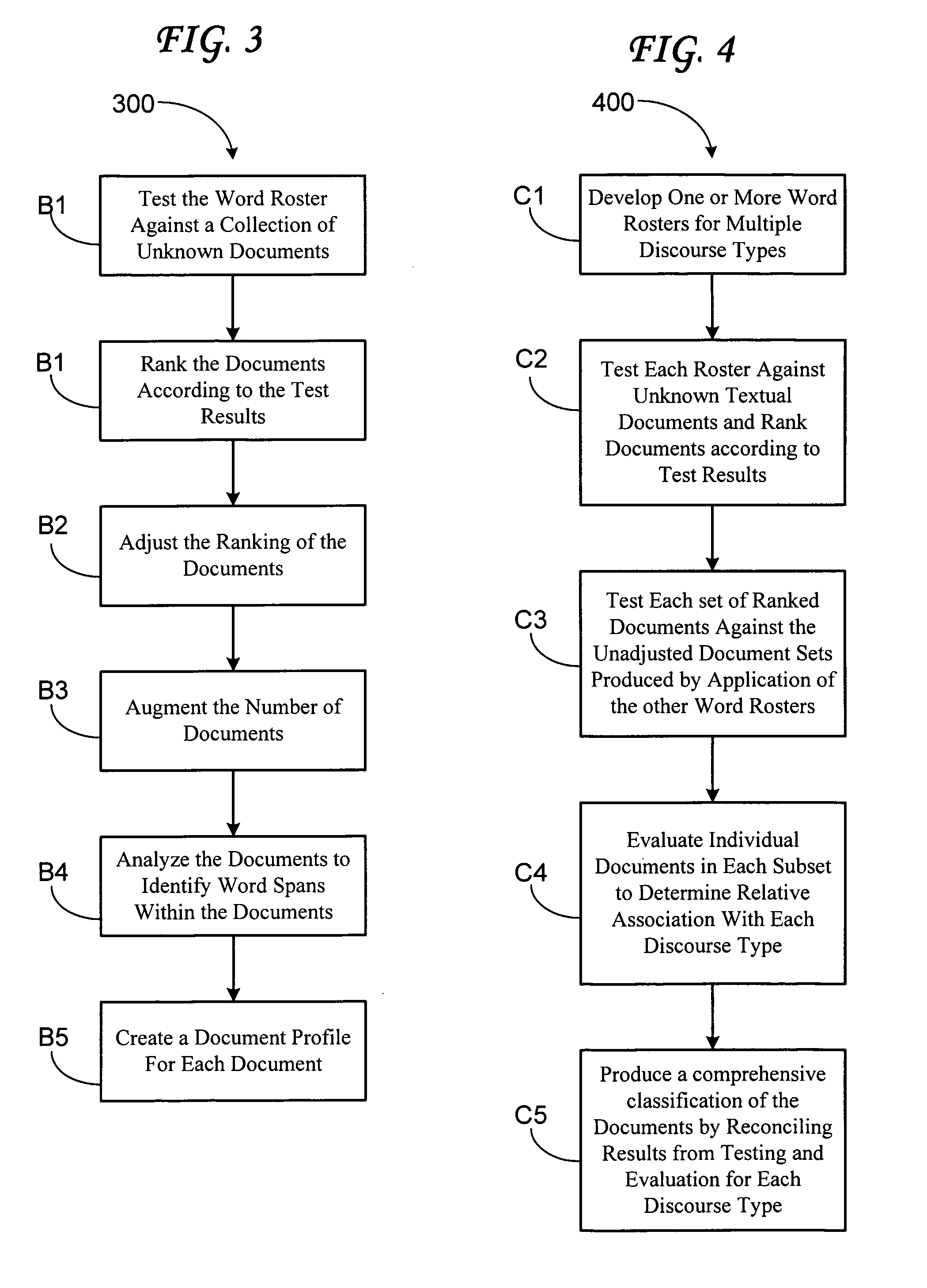Automated evaluation systems & methods
a technology of automatic evaluation and evaluation system, applied in the field of corpus linguistics, can solve the problems of poor fit of models for texts, insufficient restraints, and low recall and precision of results, and achieve the effect of increasing the specificity of evaluation
- Summary
- Abstract
- Description
- Claims
- Application Information
AI Technical Summary
Benefits of technology
Problems solved by technology
Method used
Image
Examples
Embodiment Construction
[0031] The embodiments of the present invention are directed toward automated evaluation systems and methods to evaluate a large set of documents to produce a much smaller set of documents that are most likely, with a specific degree of the precision (getting just the right documents) and recall (getting all the right documents), to be members of the discourse type defined in advance by the user. The various embodiments of the present invention provide novel methods and systems enabling efficient natural language processing, data mining, and computer-assisted information processing, including document classification and content evaluation. The systems and methods disclosed herein produce useful results utilizing technical features useful in numerous industrial applications to yield useful results. For convenience and in accordance with applicable disclosure requirements, the following definitions apply to the various embodiments of the present invention. These definitions supplement...
PUM
 Login to View More
Login to View More Abstract
Description
Claims
Application Information
 Login to View More
Login to View More - R&D
- Intellectual Property
- Life Sciences
- Materials
- Tech Scout
- Unparalleled Data Quality
- Higher Quality Content
- 60% Fewer Hallucinations
Browse by: Latest US Patents, China's latest patents, Technical Efficacy Thesaurus, Application Domain, Technology Topic, Popular Technical Reports.
© 2025 PatSnap. All rights reserved.Legal|Privacy policy|Modern Slavery Act Transparency Statement|Sitemap|About US| Contact US: help@patsnap.com



